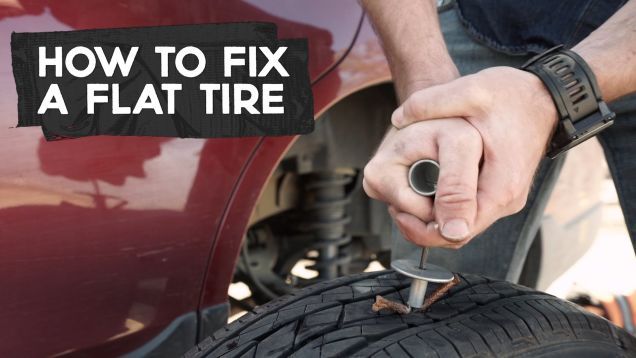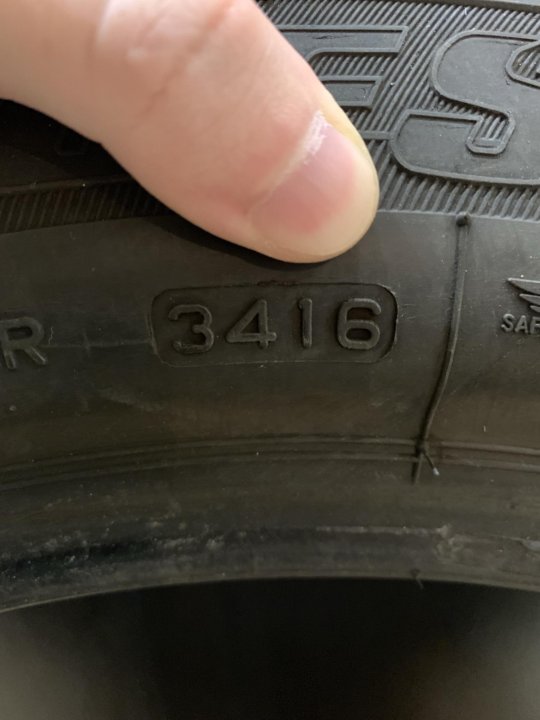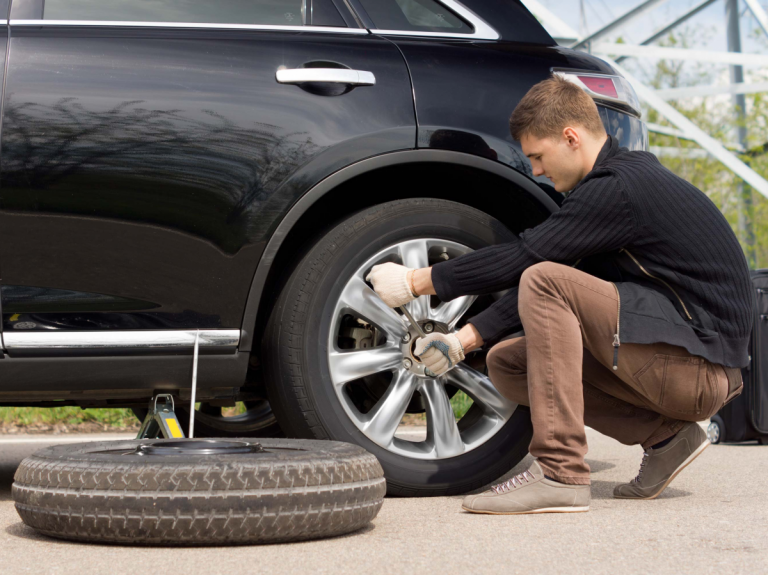23 September 2019
A growing number of new BMW vehicles are delivered from the factory equipped with run-flat tires. While many owners enjoy the peace of mind that comes with tires that can allow you to drive an extra 50-100 miles when flat, other owners prefer regular tires. So, can a BMW use regular tires if it came with run-flat tires?
If you’re looking for the quick and easy response to that question, the answer is: “Yes, you can use regular tires on your run-flat-equipped BMW.” Of course, there are benefits and drawbacks of regular tires as well as run-flat tires, and we want to help you make the decision that best suits your needs. One cautious bit of advice, though, if you’re considering changing your BMW’s run-flat tires to regular tires, you must do so on all four tires because of the handling and performance differences between the types of tires.
Why switch from run-flat tires to regular tires on a BMW
As a way to reduce overall weight of new BMWs, they no longer come with spare tires. Some models, especially performance-based M vehicles, come with BMW Mobility Kits in place of a spare tire. Most other models come equipped with run-flat tires. Also known as zero-pressure tires, these mean you have the assurance that nothing other than a complete tire failure will prevent you from getting to your destination or a service shop, even if you’re on an out-of-town road trip. There are positive and negative aspects of run-flat tires, however.
Don’t get us wrong, run-flat tires have come a long way, but they still tend to be more expensive, harder to find in emergency situations, and they simply don’t offer the same ride comfort or performance capabilities as regular tires.
Modern BMWs that come with run-flat tires have their suspensions tuned to minimize the negative effects ofthose tires, but talk to any BMW driver who’s compared their car before and after making the switch, and regular tires are almost always the clear winner. As with run-flat tires, there are positives and negatives to regular tires on your BMW, too.
Considerations when switching from run-flat to regular tires on a BMW
Switching from run-flat to regular tires on your BMW is a simple enough procedure on its own, but there are other things to think about. The main consideration is that you’ll no longer have the ability to drive long distances on a leaking or full flat tire. Therefore, it’s in your best interest to be prepared for the inevitable flat tire.
The main consideration is that you’ll no longer have the ability to drive long distances on a leaking or full flat tire. Therefore, it’s in your best interest to be prepared for the inevitable flat tire.
BMW offers their factor Mobility Kit that can be purchased directly from your local BMW dealer or through online vendors. It’s a fine kit that comes with BMWs that are delivered with regular tires from the factory. However, the price is higher than other options, so don’t feel like you have to have the BMW-specific mobility kit.
A regular tire repair kit is inexpensive and smart to have available in your BMW at all times, and a can of something like Fix-a-Flat plus an air compressor are a must. Tire repair kits with the necessary tire-repair product and a compressor are generally less expensive than the BMW-branded option. Just be sure to find one that includes a water-based tire-repair product that’s labeled as TPMS-safe, so you don’t damage your in-wheel tire pressure sensors.
If you have a new or certified pre-owned BMW that still has provided service, there’s also the BMW Assist program that can be used for tire emergencies among other things. If not, a AAA membership or something similar is always good insurance. There’s also the option of purchasing a temporary spare tire to keep in your trunk, but that will add weight and take away from storage space.
NOTE: If you switch from run-flat tires to regular tires on a leased BMW, be sure to keep the original tires if they’re in good shape. Your BMW will need to be returned exactly as it was equipped, so you don’t want to be stuck purchasing brand-new run-flat tires at lease-end if you don’t have to.
If you need assistance choosing replacement tires from your BMW’s run-flat tires that will be the right choice for your location and driving needs, contact Zohr online or call/text us. We’ll be happy to help you and answer any questions regarding tires for your vehicle. Plus, since we are mobile tire service experts, we’ll even deliver them directly to you and install them at your home or office.
Do I Need Winter Tires for My Car | Zohr How to Remove and Install Center Lock Wire Wheels | Zohr
All tires eventually need to be replaced. Sometimes, tires need to be replaced because they get too old, too worn, or simply aren't well-suited for your driving style anymore. That goes for run-flat tires, too, which now come standard on 14% of new vehicles according to Edmunds data.
If you currently have a set of run-flats, you may wonder if it's okay to replace your run-flat tires (RFT) with regular tires. We're here to answer your question!
Yes, you can replace four run-flat tires with four conventional tires as long as they meet your vehicle's manufacturer recommendations.
Keep in mind that different tires are designed to deliver different results. A run-flat tire is designed to keep a vehicle traveling safely and under control for a limited distance, even after a puncture. RFTs don't rely on air pressure to maintain their shape and capabilities over a limited distance.
RFTs don't rely on air pressure to maintain their shape and capabilities over a limited distance.
Compared to a standard tire, a run-flat tire has a thicker, more reinforced sidewall made of special heat-resistant rubber to support the weight of the vehicle and passengers for a limited distance, even if the tire has little to no air pressure.
There are a couple of other considerations from tire and vehicle manufacturers that you should keep in mind when choosing conventional tires for a vehicle that came with run flat tires, too.

Would you put one winter tire and three all-season tires on your car? Eek. Probably not. So, why consider mixing run-flat tires with regular tires? As the folks at Bridgestone say, you should never mix run-flat tires with conventional tires unless it's an emergency or a temporary fix.
"Conventional tires do not have run-flat capability and the handling characteristics of the vehicle with these tires may be different," notes Bridgestone. Mix and match your tires and you'll not only end up with imbalanced handling, but potentially different tire wear between axles.
If you're in a pinch and have no other choice but to mix the two, verify that the replacement tire's size, load capacity, inflation pressure, and speed rating specifications meet the requirements of the vehicle. Then, replace the regular tire with the proper run-flat tire as soon as possible. It’s also advisable that all tires should be the same type of self-supporting run flat.
Then, replace the regular tire with the proper run-flat tire as soon as possible. It’s also advisable that all tires should be the same type of self-supporting run flat.
Let's say you have one run-flat tire that's damaged. Can the tire be repaired? The answer is, it depends.
"A run-flat tire can be rendered unusable due to a puncture or other road hazard," writes Bridgestone in their FAQs. "Some punctures may be repaired under certain restrictions," but it depends on "vehicle speed, load, and maneuvering; the amount of inflation pressure loss; and ambient temperature," along with the "extent and location of a puncturing object."
Run flat tires are not repairable if the tire states on the sidewall “Do Not Repair;” if the tire is driven when the inflation pressure dropped below 15 psi; if there is abrasion damage on the outside or inside of the tire; or, if any other condition renders a tire unrepairable.
To ensure your tire is repaired or replaced properly, it’s best to have a trained technician do the work. The tire technicians at your local Firestone Complete Auto Care will fully inspect the inside and outside of your tire to determine if it can be repaired. Also, check your owner's manual. Some vehicle manufacturers don't recommend using repaired tires. Repairing an RFT could also void the tire's warranty, if applicable.
The tire technicians at your local Firestone Complete Auto Care will fully inspect the inside and outside of your tire to determine if it can be repaired. Also, check your owner's manual. Some vehicle manufacturers don't recommend using repaired tires. Repairing an RFT could also void the tire's warranty, if applicable.
Before you decide to change your run-flats to regular tires, consider the following points:
Need new tires? Whether you just got a flat tire or need to replace all four of your tires, you'll find the right tires for your car at the right price with our online tire catalog, which includes run-flat tires. You can browse by make, model, year, and trim level and get your tires delivered to your nearby Firestone Complete Auto Care for complimentary mounting services.
You can browse by make, model, year, and trim level and get your tires delivered to your nearby Firestone Complete Auto Care for complimentary mounting services.
Oleg Rastegaev
Photo: Dmitry Pitersky
Expert group: Andrey Mokhov | Oleg Rastegaev | Yaroslav Tsyplenkov
How bad is the comfort of Run Flat tires with reinforced sidewalls, on which, after a puncture, you can reach the tire shop? Why are they used today not only by BMW and Mini, but also by Mercedes-Benz, Infiniti, Lexus? We took a Bavarian "three-ruble note" with two sets of tires, "safe" and regular, and went to the landfill.
Struggling with punctures in pneumatic tires, already at the beginning of the 20th century, tire manufacturers tried to use porous rubber and bandage rings - but these unpractical solutions took root only in motorsport and in military equipment. It was not until 1973 that Dunlop offered to reinforce the sidewalls with an additional layer of rubber, which, in the event of a puncture, acted as a cushion between the rim and the road and allowed the movement to continue even at zero pressure. The technology was called Dunlop Denovo, reinforced tires were installed as an option for Fiat Panda, Rover P6B cars. Later, the name Run Flat was assigned to these tires - driving on a flat tire, that is, on a deflated tire. And they began to be truly mass-produced only at the end of the nineties of the last century, when the technology was adopted by BMW: Bavarian cars began to be designed without niches for a spare tire at all.
The technology was called Dunlop Denovo, reinforced tires were installed as an option for Fiat Panda, Rover P6B cars. Later, the name Run Flat was assigned to these tires - driving on a flat tire, that is, on a deflated tire. And they began to be truly mass-produced only at the end of the nineties of the last century, when the technology was adopted by BMW: Bavarian cars began to be designed without niches for a spare tire at all.
Run Flat tires are not only an additional layer of rubber on the inside of the sidewall, but also a different design of the carcass, bead ring and bead cord adjacent to it spare-document. Moreover, it will not just be thrown into the trunk, but placed in a specially equipped niche under the raised floor, which, unfortunately, will significantly reduce the usable volume of the cargo compartment. So is it worth sacrificing the trunk for the sake of driving comfort? And by the way, how safe are run flat tires to drive when flat? I remember very well how, 14 years ago, at the Paul Ricard track, journalists sorted out a flat Pirelli Run Flat tire on a “one” BMW.
Pirelli uses the “Run Flat” label, while other manufacturers use more sophisticated abbreviations: RSC (Michelin), RFT (Bridgestone) or SSR (Continental)
Take me, too, Pirelli - a modern model of the Cinturato P7 in dimension 225 /55 R17. Two sets. The one that Run Flat, with reinforced sidewalls, is also marked with asterisks: the tires are homologated for BMW and Mini cars. And the function of the aggregate carrier will be performed by the BMW 320d. His native tires are slightly lower, dimensions 225/50 R17, but may the tire gods forgive us for a five percent difference in profile height.
Due to the stiffer sidewalls and developed humps, it is more difficult to mount Run Flat tires. Beading Run Flat tires is, of course, more difficult: not only is the sidewall much stiffer, but also the humps are higher (these are the tides that prevent the tire bead from sliding into the inner rim stream). The wheel designed for regular tires has a hump height of 5 mm, while the one designed for Run Flat tires has a hump height of 6. 2 mm. But even our ten-year-old tire changer coped with the task.
2 mm. But even our ten-year-old tire changer coped with the task.
The wheel of the Krasnoyarsk company K&K (left) with dimensions 7.5x17 h3 is designed for a conventional tire. And the one on the right is marked 7.5x17 Eh3 + - the abbreviation Eh3 + means Extended Hump, extended humps of increased height (shown by arrows) for Run Flat tires
Let's go!
Is there a difference on the go? At the same pressure of 2.2 bar, Run Flat tires give more vibrations on a relatively flat surface - the body trembles more noticeably in a short wave. But on large bumps there is no significant difference: on both tires, the BMW 320d rides through the pits harshly.
Full version available to subscribers onlySubscribe now
Monthly subscription
229
Yearly subscription
27481590
I am already subscribed
1 What is RunFlat?
RunFlat is translated into Russian as “flat driving” or driving on a flat tire. Tire manufacturers use different technology designations (example: Goodyear RunOnFlat, Bridgestone RFT, Michelin ZP, Continental SSR, Pirelli Run Flat, Dunlop RunOnFlat, Nokian Flat Run, Yokohama ZPS, Kumho XRP).
Tire manufacturers use different technology designations (example: Goodyear RunOnFlat, Bridgestone RFT, Michelin ZP, Continental SSR, Pirelli Run Flat, Dunlop RunOnFlat, Nokian Flat Run, Yokohama ZPS, Kumho XRP).
2 What are RSC tires?
RunFlat System Component is a single designation for all RunFlat tires installed on BMW vehicles.
3 What is the difference between Run Flat tires and regular tires?
4 How RunFlat Tires Work?
RunFlat technology is based on the concept of reinforced tire sidewalls. When a conventional tire deflates, it simply sags under the weight of the car, the beads move away from the rim and the sidewalls flatten onto the road. The weight completely destroys the tire in a few kilometers. Reinforced sidewalls of RunFlat tires keep the tire on the rim and successfully support the weight of the car after a puncture and complete loss of pressure. At the same time, all dynamic vehicle security systems such as ABS, ESP, DSC, CBC, etc. remain active.
Reinforced sidewalls of RunFlat tires keep the tire on the rim and successfully support the weight of the car after a puncture and complete loss of pressure. At the same time, all dynamic vehicle security systems such as ABS, ESP, DSC, CBC, etc. remain active.
5 How many kilometers and at what speed can you drive after a puncture?
The maximum run-flat distance depends on the tire manufacturer and operating conditions (50-150 km) The maximum vehicle speed is 80 km/h.
6 What are the differences in RunFlat technology between tire manufacturers?
7 Are there conditions for the use of Run Flat tires?
Without a tire pressure monitoring system installed, the operation of RunFlat tires becomes extremely dangerous, because the driver may not feel the loss of pressure in the tire and continue to move without speed limits, making sharp turns and maneuvers.